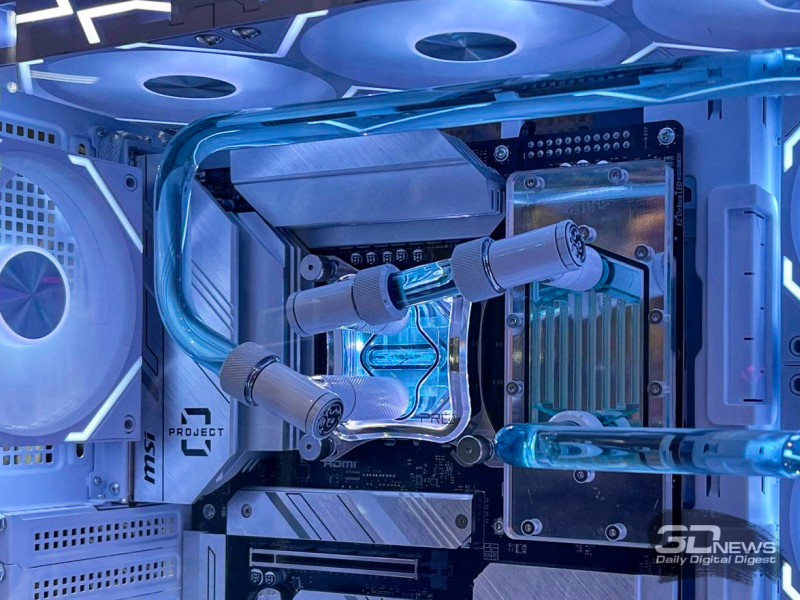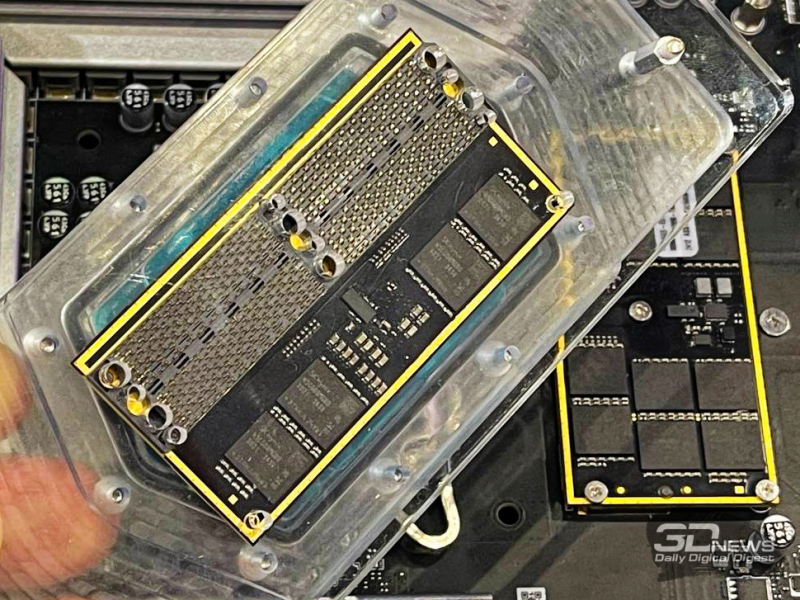MSI has recently unveiled a desktop motherboard supporting mobile memory modules, specifically the CAMM2 model. Initially designed for laptops, these modules don’t seem to have notable advantages for desktop systems. However, MSI discovered that it’s considerably simpler to create a liquid cooling system for CAMM2 modules. The company displayed this innovation through a specially crafted water block for DDR5 chips within a CAMM2 module.
The water block, designed for the Z790 Project Zero Plus motherboard, features a minimalistic design. However, MSI hasn’t demonstrated the system in action yet. This could be due to required design improvements, or the lack of overclocking-friendly modules of this new form factor on the market. Overclocking modules that could benefit from a water block need to undergo a selection process for performance potential and require a custom printed circuit board.


MSI’s idea of introducing liquid cooling for CAMM2 modules could prove very promising. CAMM2 modules with DDR5 memory feature Power Management Integrated Circuits (PMIC) and Voltage Regulator Modules (VRM). Both PMIC and VRM tend to heat up as voltage increases, just like memory chips. Liquid cooling these components could potentially increase the overclocking potential of the module. Given that CAMM2 modules are horizontally installed on motherboards, it’s easier to assemble and install water blocks for them.

Notably, the CAMM2 form factor is developed to save space rather than enhancing maximum performance. Hence, its signal contacts are situated very close to each other, potentially leading to interference issues. While this isn’t an issue for standard frequency operations, it could limit the overclocking potential.





